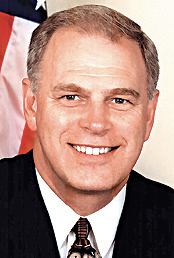

Thursday, August 30, 2007

Ohio Governor Ted Strickland (D-Lisbon)
The state enacted legislation deregulating the electricity market in 1999.
By MARC KOVAC
VINDICATOR CORRESPONDENT
COLUMBUS — Regulated electricity rates for the immediate future and increased use of renewable and advanced energy generation are among the key provisions of an energy plan unveiled Wednesday by Gov. Ted Strickland.
With about 16 months left before existing rate stabilization ceases in Ohio and the state fully implements electricity deregulation, the governor presented his Energy, Jobs and Progress plan. It’s aimed at ensuring stable and predictable electric costs for consumers, creating employment opportunities in energy fields and modernizing the state’s power infrastructure.
“We now face a choice,” Strickland said. “We can embrace unchecked monopolies presented under the guise of a deregulated marketplace — a false marketplace — that would stifle our economy and leave to chance the development of innovation. Or we can embrace a carefully crafted hybrid approach that recognizes how we generate, distribute and price electricity affects every one of us every day and acknowledges that maintaining an adequate supply of electricity is a fundamental responsibility of our state government.”
In 1999, the state enacted legislation deregulating the electricity market. Proponents at the time believed that the move would lead to more competitive prices.
That has not been the case in states that recently have completed the switch to a deregulated marketplace.
Strickland, citing the U.S. Department of Energy, said customers in deregulated states pay about 30 percent more for their power than customers in regulated states.
He pointed to examples of Illinois, where bills jumped as much as 55 percent after rate stabilization ended last year. In Maryland, bills rose by 72 percent, he said.
In Ohio, rate stabilization is scheduled to end after 2008, meaning customers will face a fully deregulated marketplace in 2009 without some type of legislative action.
Highlights
Key portions of the plan include:
UCompetitive Marketplace or Electricity Security Plan: When a competitive marketplace exists, utilities would be allowed to charge market rates, Strickland said.
UAdvanced Energy Portfolio: Strickland called for increased alternative and renewable energy generation, including the use fuel cells, clean coal and advanced nuclear.
“Under my plan, by 2025, a minimum of 25 percent of the electricity sold in Ohio must be generated from advanced energy technology,” he said. “No less than half of that energy will come from renewable sources, including biomass, wind, solar, anaerobic digesters, geothermal and hydropower. And no less than half of that advanced energy must be created in Ohio.”
UAccountability and Transparency: Strickland’s plan calls for increased use of smart meters and other informational means to assist consumers in better understanding their electricity use and costs.
UGlobal Warming: Strickland said, under his plan, the Ohio Air Quality Development Authority would pursue pool purchasing options for electricity for state facilities, provide lower-cost financing for new power generation projects, coordinate state-supported research and development projects and support utilities’ energy efficiency efforts.